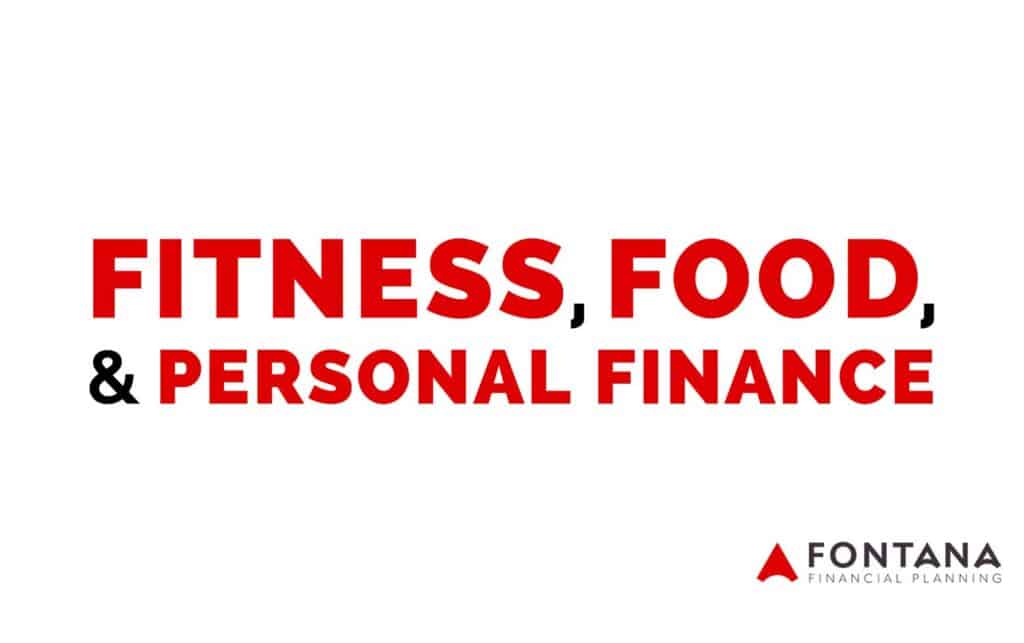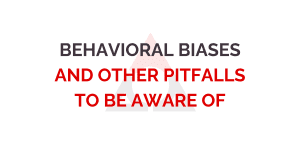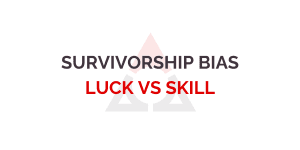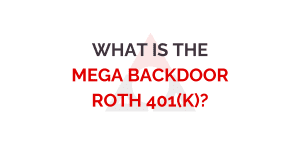The First Step
It was September of 2011 and I tipped the scales, didn’t like what I saw and decided it was time for a change – 282 pounds. I had decided I wanted to make a change before but I had never actually done anything meaningful about it.
This time would be different. This time, I signed up for what was at the time an insurmountable challenge – I was going to run a half marathon. I wanted to keep up the momentum of my decision and immediately signed up for the Rock N Roll Dallas Half Marathon that would take place six months later. Now there was financial risk involved and as a broke college student I was not going to let my $125 entry fee go to waste.
You may be reading this feeling much the same way about your personal finances – you know you have goals to achieve and that things could be done better but you don’t know where to start. Taking the first step, building the momentum is key.
The first step for most people is building a financial plan – you can’t know what your journey should look like until you have a destination. Build a budget if you don’t have one. Define the goals that you’d like to achieve. Take stock of what all you have saved and where you’ve saved it.
Crossing the line for the First Time
Six months later I was firing on all cylinders. I was down about 60 pounds – weighing in at 220 pounds – and was in the best shape of my life – the entry fee did not go to waste!
To train for this half marathon I hit the gym, hard. I didn’t have any expertise in running or weight loss so I figured if I run as fast as I can as often as I can and lift heavy weights I’ll be set. To my surprise, it worked.
March 25th, 2012 I achieved what I thought impossible six months prior, I crossed the finish line of my first half marathon and did so in a time of 1 hour and 51 minutes. The journey was much tougher than I anticipated – the unassuming water cup filled with beer on mile 10 didn’t help – but I finished the day at an all time high.
Once you have your plan and have taken account for your assets and liabilities, continue to build on the positive momentum. Pay yourself first. Max out your retirement accounts. Automate your savings.
The most fun part of starting your personal finance journey is the feeling you get when you see your progress come to fruition. Cherish that and continue to build. The sooner you can make progress the better, time is your friend because it leads to compounding. Let little wins grow into big wins.
The Set Back
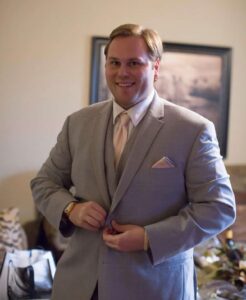

For my entire life my biggest vice has always been food. I love to eat and I’ve never known how to stop. I was able to get all the way down to 200 pounds – losing over 80 pounds in about a year’s time.
I did this in spite of my diet, not because of it. My fitness regimen was unsustainable and eventually I burnt out. As a result, I slowly gained all of the weight back and on my wedding day, July 3, 2016, I was back at 280 pounds – the best day of my life and I was back in the worst shape of my life.
In hindsight, I should have consulted experts and educated myself so that I could build healthier and more sustainable practices. I’d never been through either of these journey’s – the half marathon or the weight loss – and instead of leaning on those that had and were experts in the field I assumed I knew best and paid for it.
Many do-it-yourself investors may find themselves in the same place. Maybe you felt like an investment was a sure thing and put too much money into it only to have it go the other way. Maybe you have always thought you could get to retirement but have never considered how. Maybe your success has outstripped your capacity to manage everything on your own and you are now overwhelmed with your situation.
Don’t make the same mistake I did. Experts are there for a reason – they add value in a sustainable manner. Don’t let your biggest regret be the opportunity that you wasted because you thought you had it all figured out. Chances are you don’t and you’ll be better off (and happier) by seeking the counsel of those who have done this before.
As Socrates said, “The smartest man is the man who knows what he does not know” and therefore can recognize what his limitations are.
The Comeback
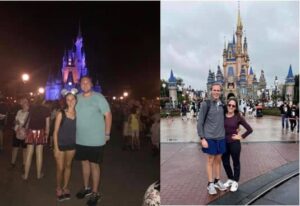

Run slow in order to run fast.
As I started the second leg to my journey I wanted to get it right this time. I wasn’t happy with the fact that I let my progress slip away and this time I was determined to educate myself and put myself in a position to maintain.
The biggest surprise I found as I educated myself in the sport of running was the counterintuitive thinking that in order to run fast you need to run slow. At least most of the time. Building endurance needs to be sustainable and as the adage goes you can’t sprint marathons.
The other important lesson I learned was the importance of having a training plan and sticking to it. My first foray into running consisted of one thing – run five miles as fast as you can each day. In this new world of strategic running I was completing threshold runs, intervals, fartlek’s, long slow runs. It wasn’t just pedal to the medal at all cost.
In my first year back into running I completed two half marathons and successfully lost 75 pounds – weighing in at 205 in July of 2018. I had gotten myself back to where I wanted to be and I wanted to make sure I stayed in that place.
As an investor, it is easy to get impatient with returns. You read about some got-rich-quick millionaire and think “That should have been me.” You hear about some investment that doubled in a month from a guy at a cocktail party – the guy won’t tell you about his many losers, of course – and think it sounds so easy.
The most successful investors get two things right – they avoid the big loss and they let compounding work it’s magic. They don’t bet the house on a flyer that they hope will get them wildly rich overnight. They understand that $100,000 growing at 6.6% per year grows to over $700,000 in 30 years. In investing, like running, you should have the goal in mind at all times, remember your plan, and trust that running slow and running smart will achieve much more than running fast and blowing yourself up.
Freedom


I had my running dialed in as my 30th birthday approached in June of 2021. I had completed 1 full marathon and countless half marathon’s (running them monthly) but my weight started creeping up again. While I could run long distances with no issue I had yet to give my diet the attention it deserved. As I ate my birthday cake and large bowl of pasta (runners carb load of course) to celebrate I weighed in at 242 pounds.
I decided that I would use my monthly Audible credit on a new type of book that crossed the bridge between endurance sport and nutrition – ‘Primal Endurance’ by Mark Sisson and Brad Kearns. These guys were both former professional endurance athletes who had crossed over to become nutrition experts and I was immediately captivated.
The ideas were simple: Eat lots of plants and animals, avoid poisonous things, align your carb intake with your weight goals, get adequate sleep.
At first it was tough to get the hang of – I decided that I would try to keep my carb intake below 100 grams per day. For context, the bowl of pasta I had at my birthday dinner alone had 103 grams – not to mention the bread and the cake. I decided to track my food intake using the My Fitness Pal app as I had never paid attention to macros in foods before and it became an integral accountability tool early on.
Once I rid myself of my carb dependency and developed healthy eating habits, I was off to the races. I couldn’t fathom eating a salad with avocado and grilled chicken for lunch followed up with a large bone broth and bison chili for dinner (about 1200 calories and 40g of carbs for the day) and not starving to death but here I was.
I quickly went from 242 to 200 – the threshold I’d reached but never broken. Then the impossible happened, I saw a 1 at the front of the scale. I bottomed out six months later at 167, 75 pounds down.
Now the focus is on maintaining the freedom that I have achieved. Enjoying the healthy meals that I now love, running for fun instead of for necessity, and exploring new facets of health and exercise that will allow me to continue my journey.
The ultimate goal of any financial plan is freedom. Retirement is ultimately the financial freedom to spend your days the way you’d like to without being held captive to your paycheck to cover your lifestyle. Buying that new house gives you the freedom of homeownership. Paying for your kid’s college gives them the freedom to develop marketable skills.
When you boil it all down, the keys to achieving freedom – in finances, in health, in sport – are faith, patience, and discipline.
In order to achieve any goal you have to have faith that you can do it, for without faith you will never fully commit.
Any goal worth achieving won’t be achieved overnight, you need to have patience that by following the process you have laid out you will ultimately achieve your goal. Put systems of accountability into place that will help you stay the course and measure your success over time.
Finally, no goal gets achieved without discipline. Once your plan is in place you must stick with it. When setbacks inevitably occur, right the ship and get back on course. It may seem nice to skip a day, eat the big, greasy cheeseburger, splurge on that expensive thing you want – and if you do it isn’t the end of the world – but tomorrow focus on maintaining course and much can be achieved.
As surmised by Warren Buffet, “If you buy things you do not need, soon you will have to sell things that you do need.” Spend your money on things you need not things you want and before long the things you want will be that much more accessible and you will have built the discipline to choose wisely.
If you’d like to sign-up for our monthly newsletter with four high-quality, financial planning focused posts per month, click here.
If you have questions about your situation, schedule an introductory call here.
Disclosure: Any opinions are those of Michael Dunham and not necessarily those of Raymond James. Expressions of opinion are as of this date and are subject to change without notice. There is no guarantee that these statements, opinions or forecasts provided herein will prove to be correct. Investing involves risk and you may incur a profit or loss regardless of strategy selected. Diversification and asset allocation do not ensure a profit or protect against a loss. Holding investments for the long term does not insure a profitable outcome. Future investment performance cannot be guaranteed and investment yields will fluctuate with market conditions. Raymond James is not affiliated with and does not endorse the opinions or services of Mark Sisson or Brad Kearns. This is not a recommendation to purchase or sell the stocks of the companies pictured/mentioned

